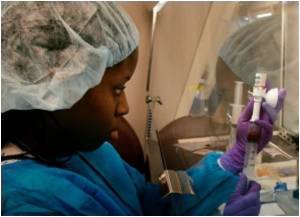Researchers have used computer simulations of cancer cells – cancer avatars – to identify drugs most likely to kill cancer cells isolated from patients' brain tumors.

Such an approach would allow scientists to selectively test cancer drugs on those who would be most likely to respond to them, while simultaneously reducing patients' exposures to toxic drugs that would likely be ineffective.
"Genomics tells us that cancers are a lot like snowflakes. No two cancers are alike so it does not make sense to give all patients the same drugs. This is the idea behind personalizing therapies for cancer," said lead author Sandeep Pingle, MD, PhD, a project scientist in the laboratory of Santosh Kesari, MD, PhD, chief of the division of Neuro-Oncology, professor in the department of neurosciences, director of Neuro-Oncology at UC San Diego Moores Cancer Center and the study's senior author.
"With the virtual cell model, we can take into account all the complexity of cellular processes to predict which drugs will be the most effective against a particular tumor based on its genomic profile," Pingle said. "This is a first step toward personalized medicine."
Researchers developed a virtual cell that represents the internal workings of a normal, healthy cell, depicting them as a complex collection of signaling pathways and metabolic networks. The virtual healthy cell can be made cancerous. Indeed, it can be turned into any kind of cancer cell by distorting specific points and pathways in the system. These cellular distortions represent a person's so-called cancer avatar. Once the avatar is generated, a computer model predicts which drugs, based upon their known functions, are most likely to kill a real cancer cell.
For the study, researchers generated cancer avatars for cells obtained from patients with glioblastoma, a highly aggressive cancer of the brain's glial cells. The condition has a five-year survival rate of about 10 percent. The computer generated predictions were then "truth-checked" against standard, cultured cells in drug-sensitivity experiments.
Advertisement
Source-Eurekalert














